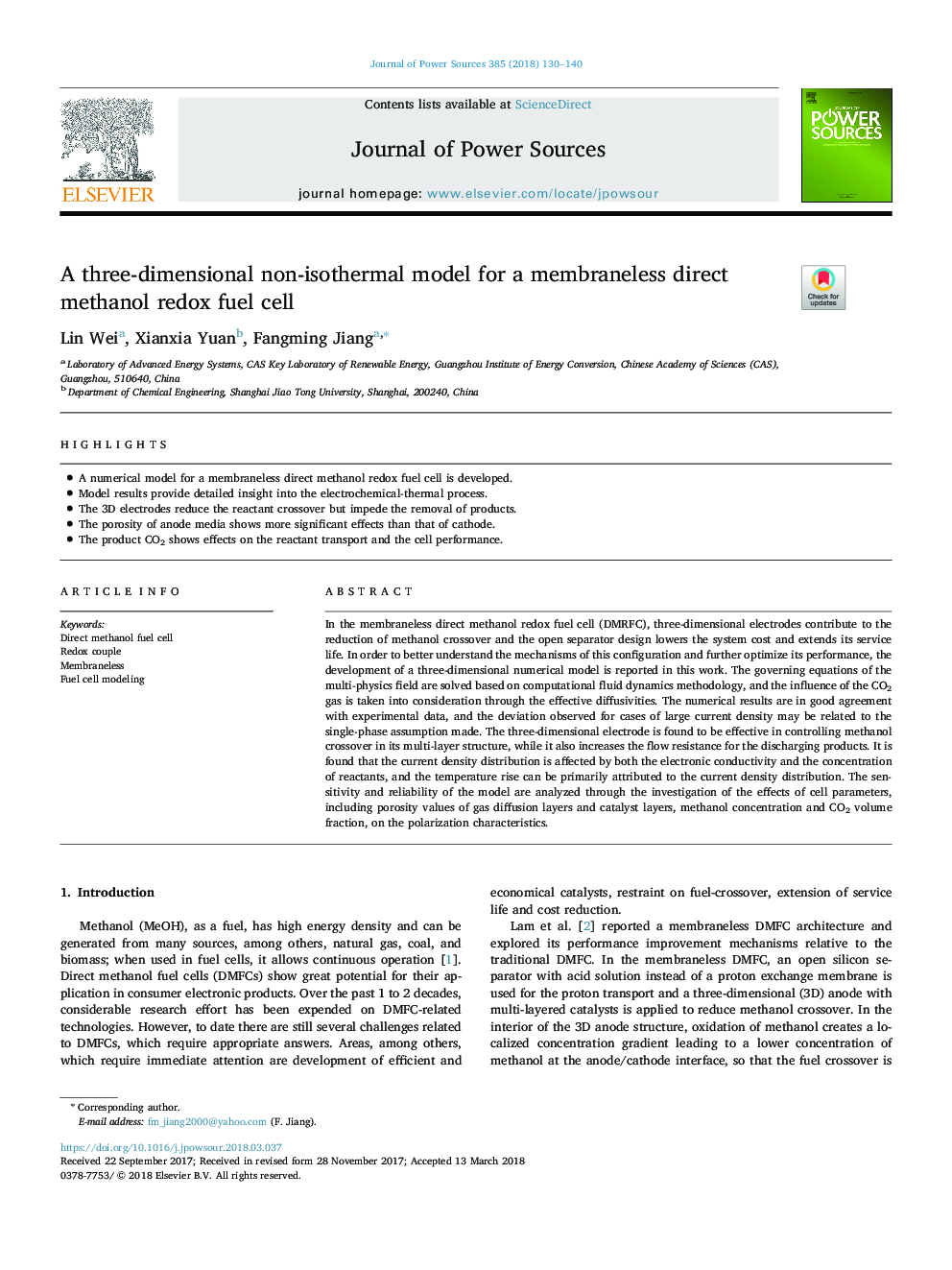| Article ID | Journal | Published Year | Pages | File Type |
|---|---|---|---|---|
| 7725357 | Journal of Power Sources | 2018 | 11 Pages |
Abstract
In the membraneless direct methanol redox fuel cell (DMRFC), three-dimensional electrodes contribute to the reduction of methanol crossover and the open separator design lowers the system cost and extends its service life. In order to better understand the mechanisms of this configuration and further optimize its performance, the development of a three-dimensional numerical model is reported in this work. The governing equations of the multi-physics field are solved based on computational fluid dynamics methodology, and the influence of the CO2 gas is taken into consideration through the effective diffusivities. The numerical results are in good agreement with experimental data, and the deviation observed for cases of large current density may be related to the single-phase assumption made. The three-dimensional electrode is found to be effective in controlling methanol crossover in its multi-layer structure, while it also increases the flow resistance for the discharging products. It is found that the current density distribution is affected by both the electronic conductivity and the concentration of reactants, and the temperature rise can be primarily attributed to the current density distribution. The sensitivity and reliability of the model are analyzed through the investigation of the effects of cell parameters, including porosity values of gas diffusion layers and catalyst layers, methanol concentration and CO2 volume fraction, on the polarization characteristics.
Related Topics
Physical Sciences and Engineering
Chemistry
Electrochemistry
Authors
Lin Wei, Xianxia Yuan, Fangming Jiang,
